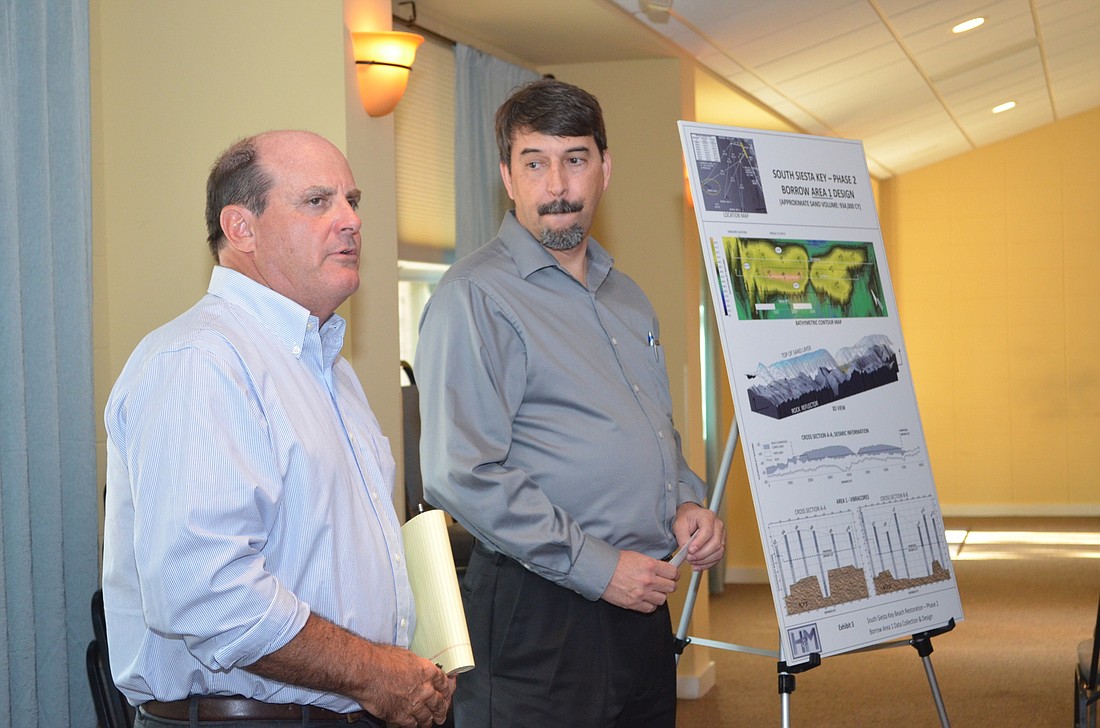- April 26, 2024
-
-
Loading

Loading

A recent change in an endangered species classification could delay South Siesta Key's sand renournishment.
The original start date for the South Siesta Key project, to replenish the sand that has eroded from the shore since the last renourishment in 2007, was planned for January so that it could be completed before the start of sea turtle nesting season in May.
The U.S. Fish & Wildlife Service declared the Rufa Red Knot bird as a threatened species that is now protected by the Endangered Species Act at recent as Dec. 9, 2014.
Although the project received a permit to proceed from the state, the migratory red knots could prevent the federal permit from being processed issued. A public meeting to inform residents of the reason behind the delay took place on Thursday, March 19 at St. Boniface Episcopal Church. County Coastal Resources Manager, Laird Wreford, explained to residents about the issue blocking the nourishment project.
“What our intention was as of the last public meeting was to have the construction ready to go, up and running this past winter season,” Wreford said. “If anything was going to be able to knock us off of our current timeline it would be this federal permit.”
Principal Project Manager and Consultant, Brett Moore of Humisten & Moore Engineers was present to explain the challenges facing the project.
“When we had our meeting with the Army Corps of Engineers the red knot was not listed,” Moore said. “Then there were changes which required additional reviews from both agencies.”
Shorebird monitoring of the area showed that four red knots appeared on the shores of Siesta Key in the last eight years.
“They use the beach like this to winter in or as a resting area on their migratory route from Canadian Arctic to South America,” said Project Manager Curtis Smith.
A biological opinion will be conducted that will involve the U.S. Army Corps. of Engineers, the U.S. Fish & Wildlife Service and NOAA that Wreford said should be resolved by midsummer.
Due to the changes the start date for the project has been moved to November. For the moment the project will proceed by mailing a construction easement document to residents along the shore to give permission to place sand beyond the erosion control line on their property. The individual associations will approve any condominiums in the effected area.